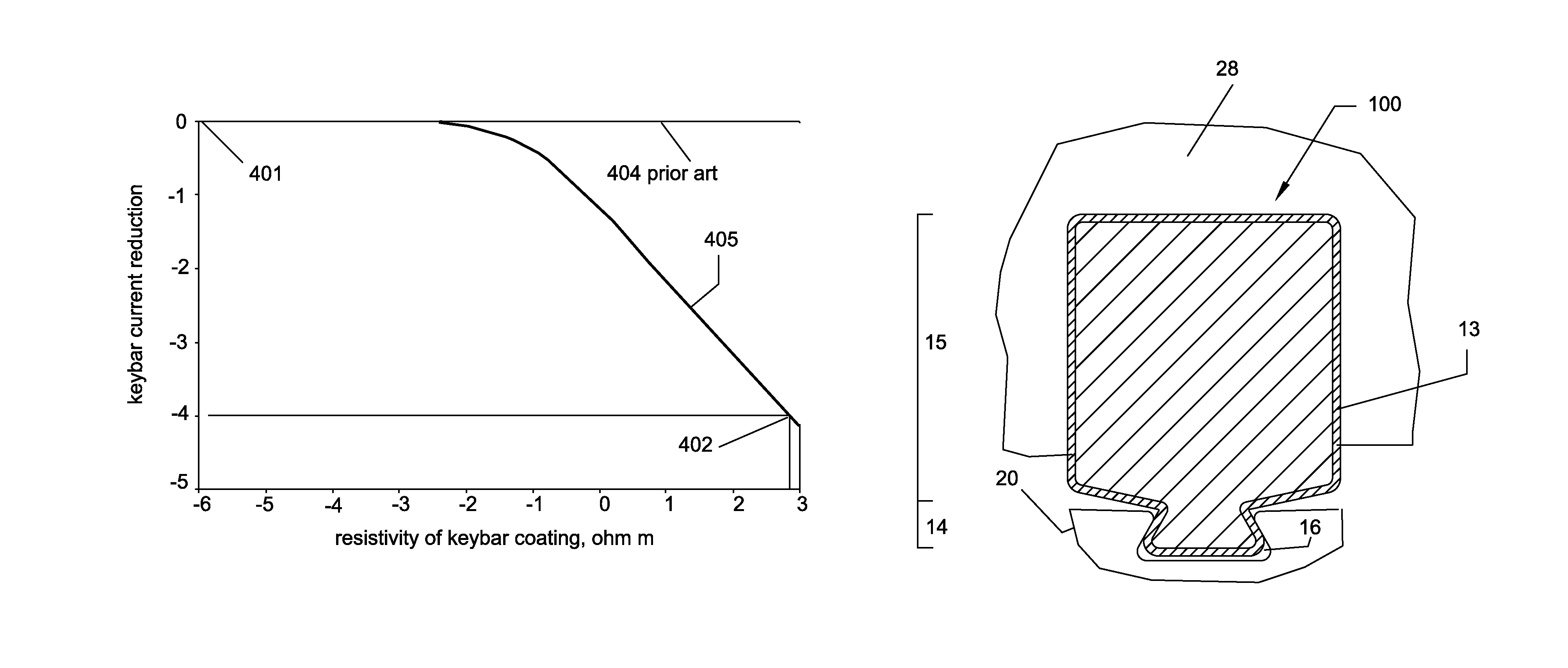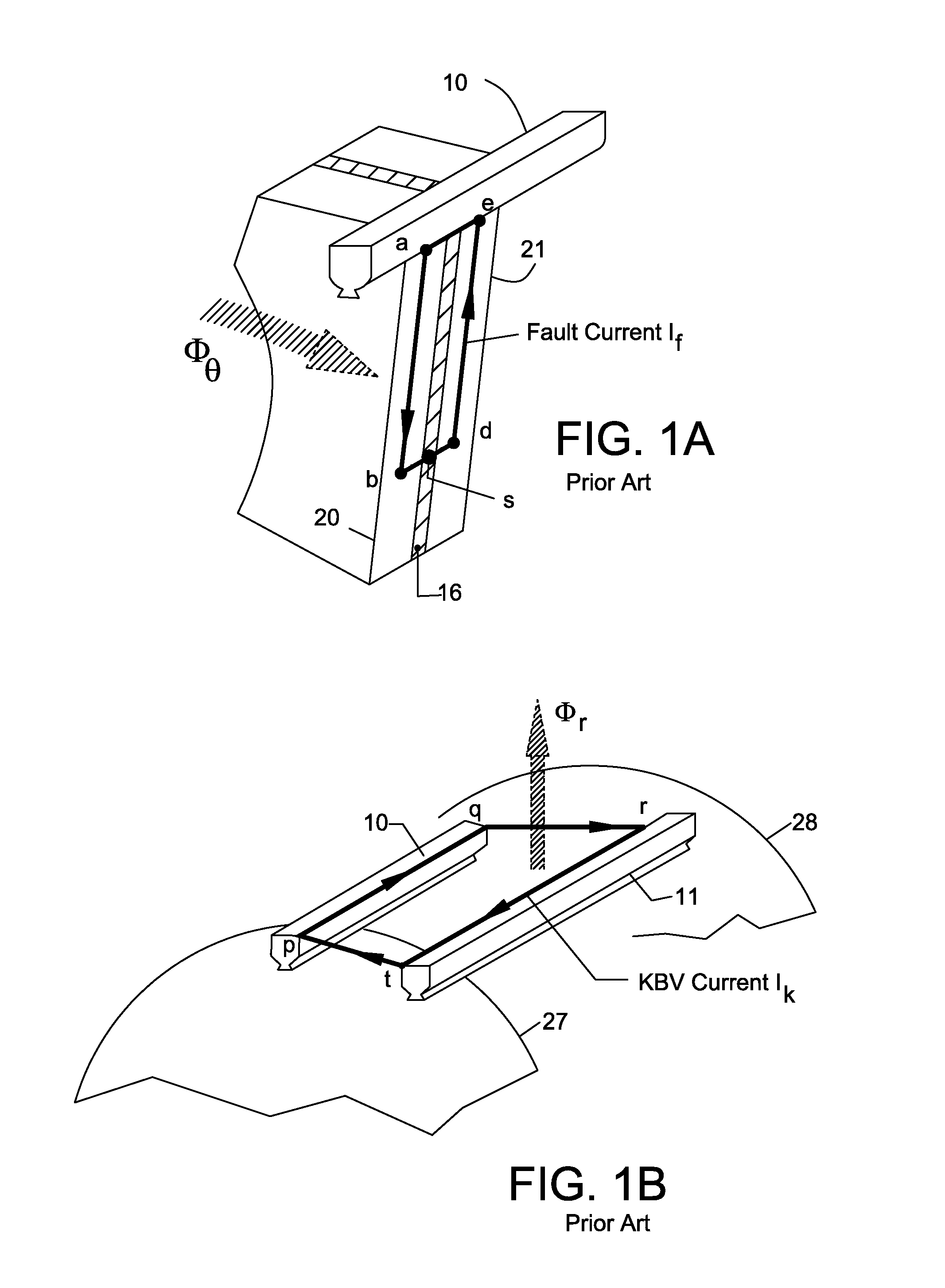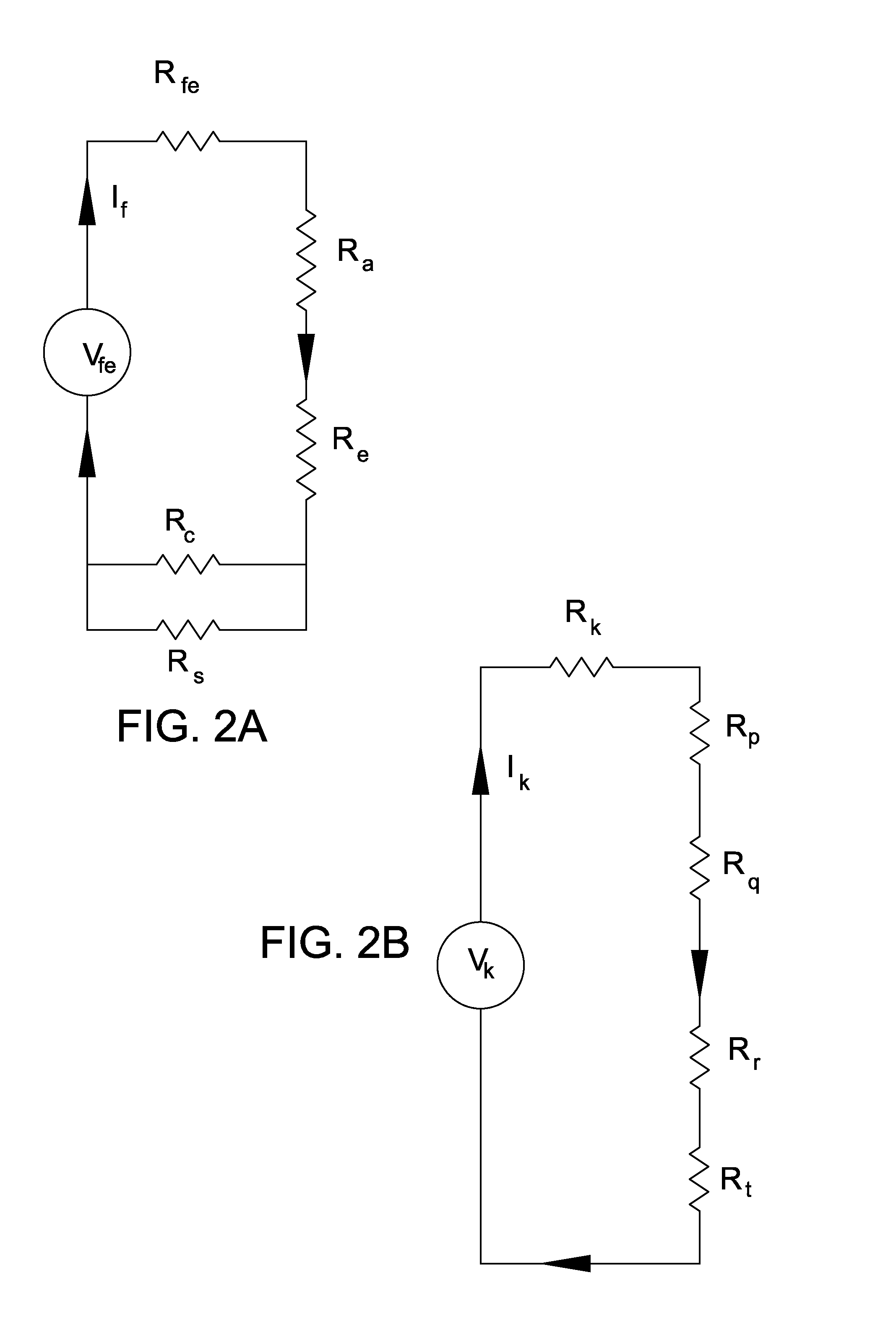Coated keybar to protect electric machines
a keybar and key technology, applied in the direction of screws, threaded fasteners, magnetic circuit shapes/forms/constructions, etc., to achieve the effect of preventing derating of the machine, preventing the core from failing, and preventing the hot spot in the cor
- Summary
- Abstract
- Description
- Claims
- Application Information
AI Technical Summary
Benefits of technology
Problems solved by technology
Method used
Image
Examples
embodiment 100
[0034]FIG. 4A shows the cross-section of a coated keybar embodiment 100. This coated keybar 100 is built by applying a high-resistivity coating 13 over the surface of a conventional keybar 10. The coating's surface resistance ranges 25 to 250 Ωcm2. Its thickness ranges 0.001″ to 0.030″. Its resistivity ranges 1 to 1000 Ωm. A thinner coating will have higher resistivity and thicker coating will have lower resistivity. The exposed surface of the keybar 100 has substantially higher resistance than the underlying keybar 10. The coated keybar 100 is subdivided into a coated dovetail 14 and a coated bolt 15 as shown.
[0035]FIG. 4B shows how the coated keybar 100 attaches to the laminations and the frame ring or flange. The coated dovetail 14 attaches to the laminations 20 while the coated bolt 15 attaches to other components such as flange or frame rings. The coated dovetail 14 fits snugly inside a matching dovetail slot 16 in the lamination 20. The high-resistivity slanted faces of the co...
embodiment 200
[0039]FIG. 5 shows a coated throughbolt embodiment 200 in accordance with the present invention. This coated throughbolt 200 comprises a conventional throughbolt with a high-resistivity coating 220. The exposed surface of the coated throughbolt 200 has substantially higher resistivity than the underlying throughbolt 210. The coated throughbolt 200 is inserted through an identical hole in the laminations and flanges 240 as shown. The surface of the high-resistivity coating 220 is in electrical contact with the flanges and laminations. The eddy currents generated in the throughbolt must pass through this high-resistivity coating 220 which weakens them. The weakened throughbolt currents reduce their operating temperature, hence prevent core-decompression and subsequent loosening of laminations.
[0040]The high resistivity coating can be applied over a conventional uncoated keybar 10 by electro-deposition technique. Such plating can employ a standalone high resistivity material or combine...
embodiment 500
[0043]FIG. 6 shows an alternative embodiment 500 of the keybar in accordance with the present invention. This employs high-resistivity strips 18 wedged in a gap between the faces of the keybar dovetail and the dovetail slot 16 of laminations 20. Individual strips 19 are also wedged between the bolt portion of the keybar and the frame ring 28. These strips are made of a high resistivity material such as silicon carbide with surface resistance in the range discussed above. The strip need not be bonded to the faces of the dovetail, but can be wedged in the gap. Such high resistivity strip operates exactly like a coating to weaken the hazard currents. However, because since it is not attached to the keybar, a strip can avoid thermal expansion related issues.
PUM
 Login to View More
Login to View More Abstract
Description
Claims
Application Information
 Login to View More
Login to View More - R&D
- Intellectual Property
- Life Sciences
- Materials
- Tech Scout
- Unparalleled Data Quality
- Higher Quality Content
- 60% Fewer Hallucinations
Browse by: Latest US Patents, China's latest patents, Technical Efficacy Thesaurus, Application Domain, Technology Topic, Popular Technical Reports.
© 2025 PatSnap. All rights reserved.Legal|Privacy policy|Modern Slavery Act Transparency Statement|Sitemap|About US| Contact US: help@patsnap.com



